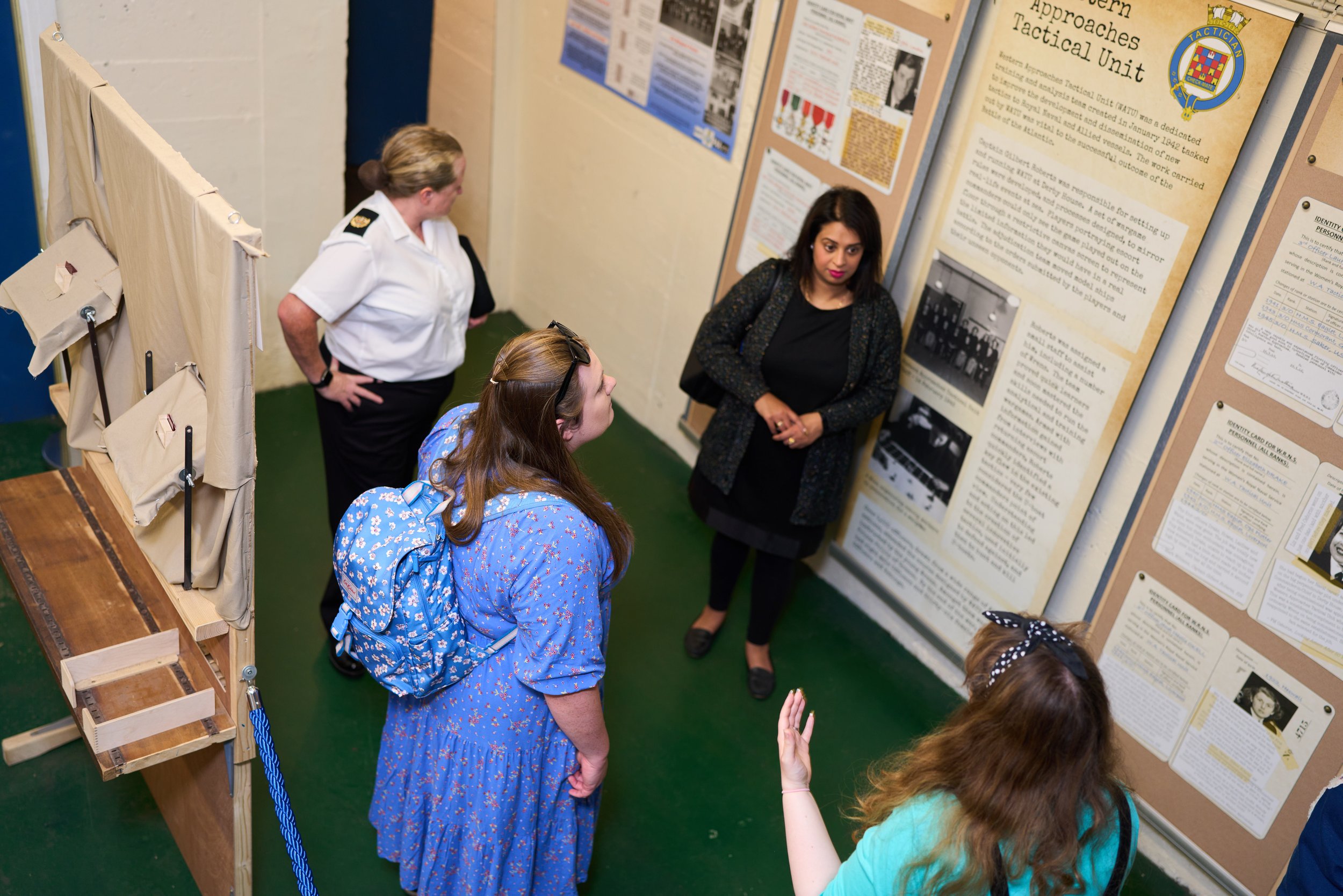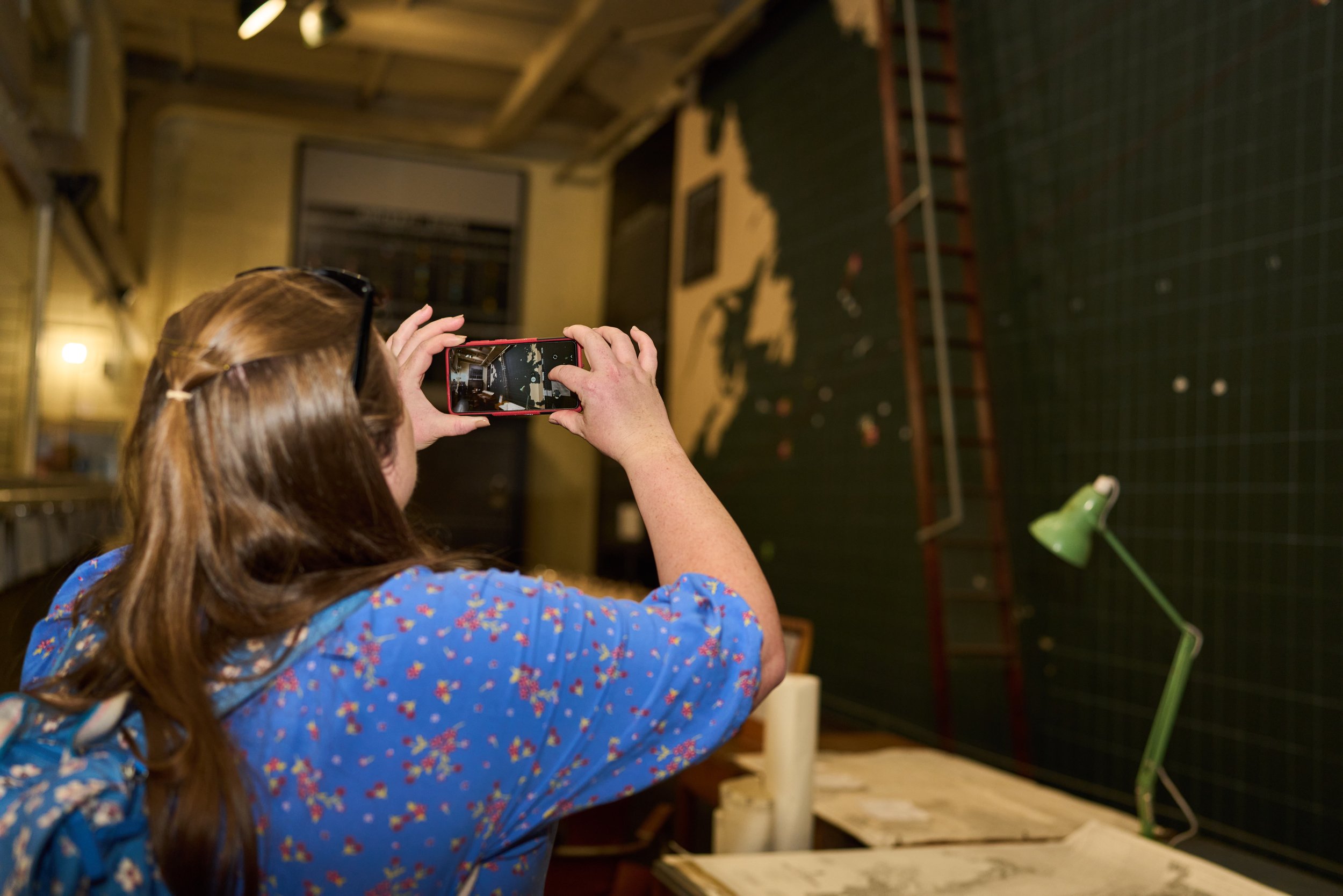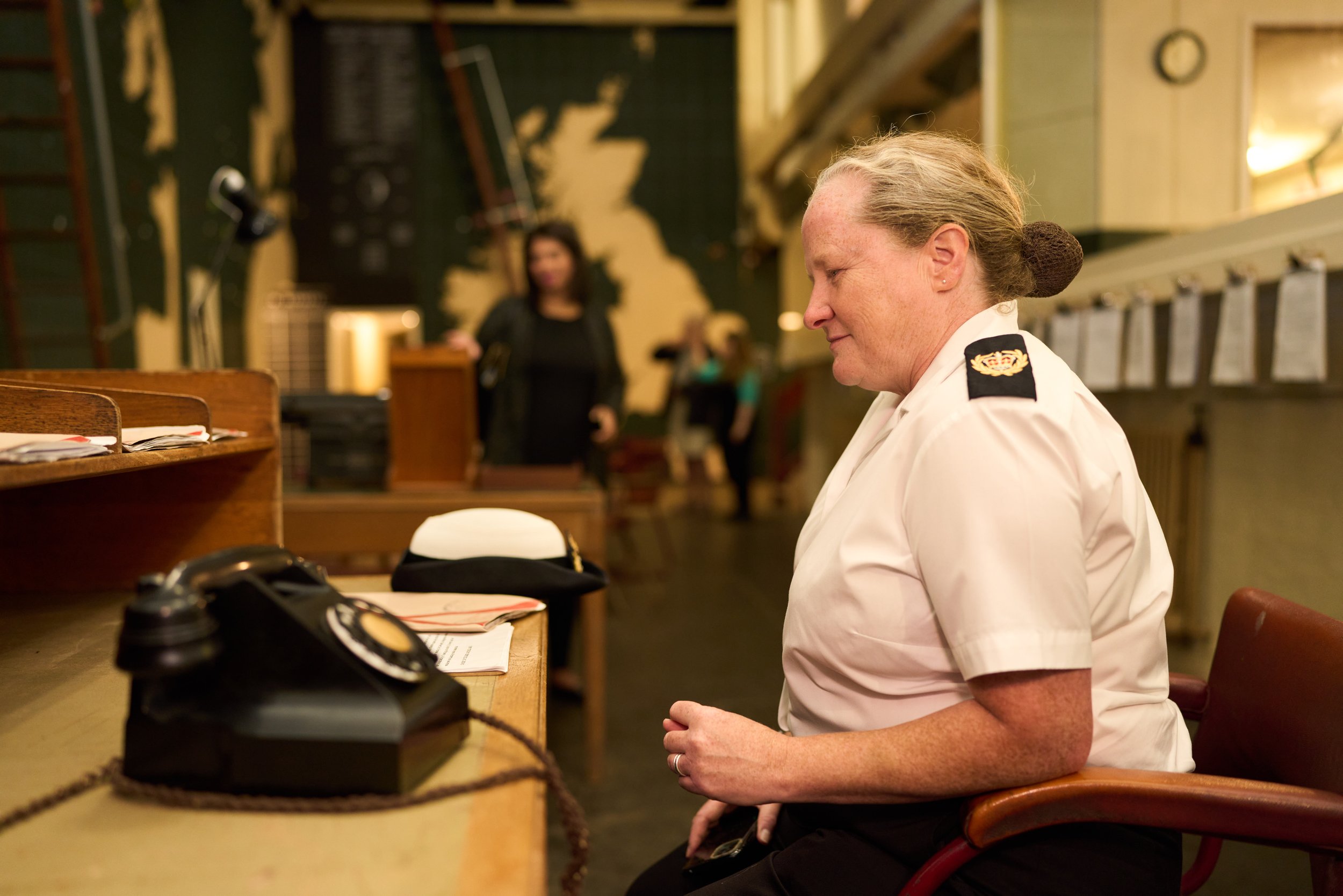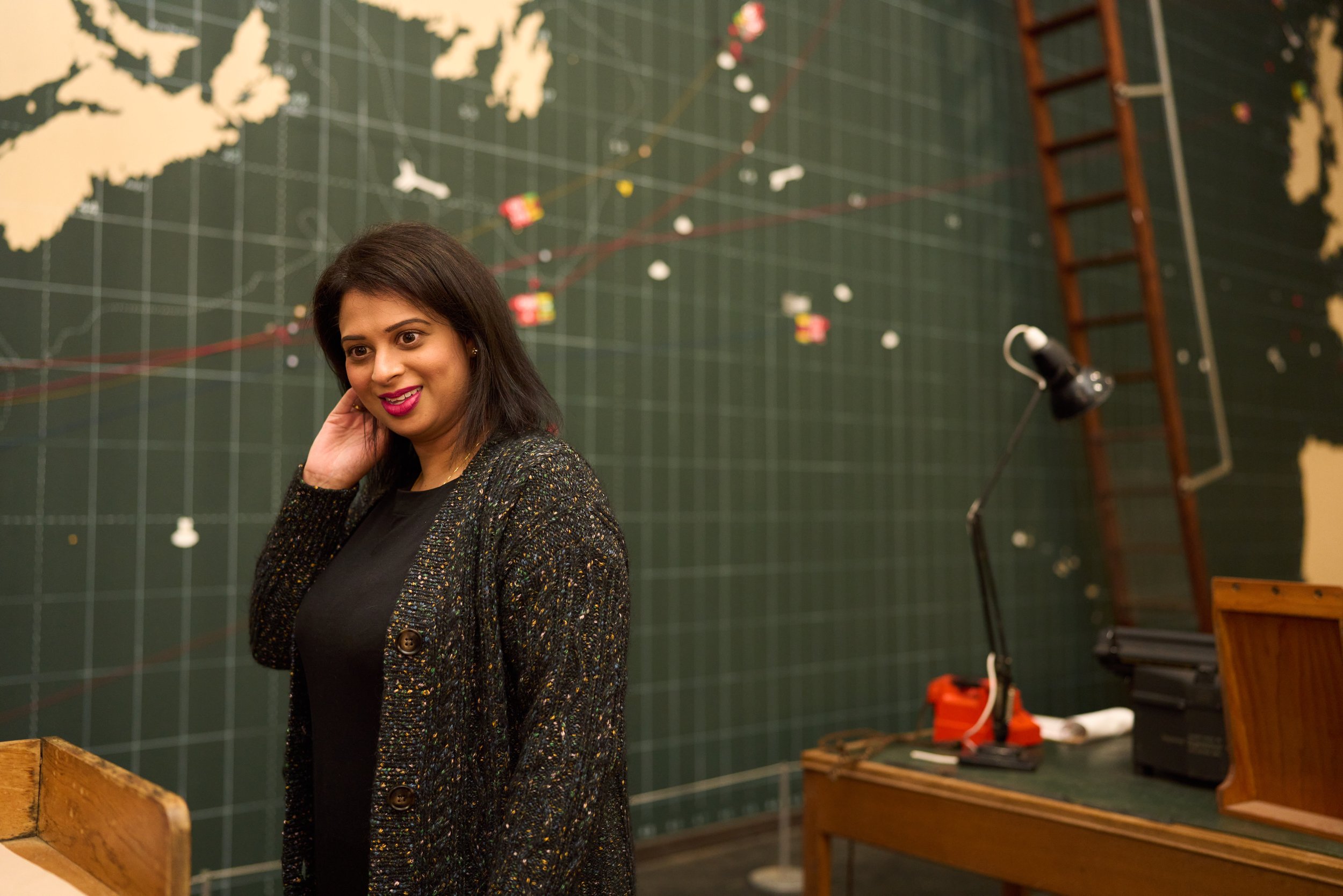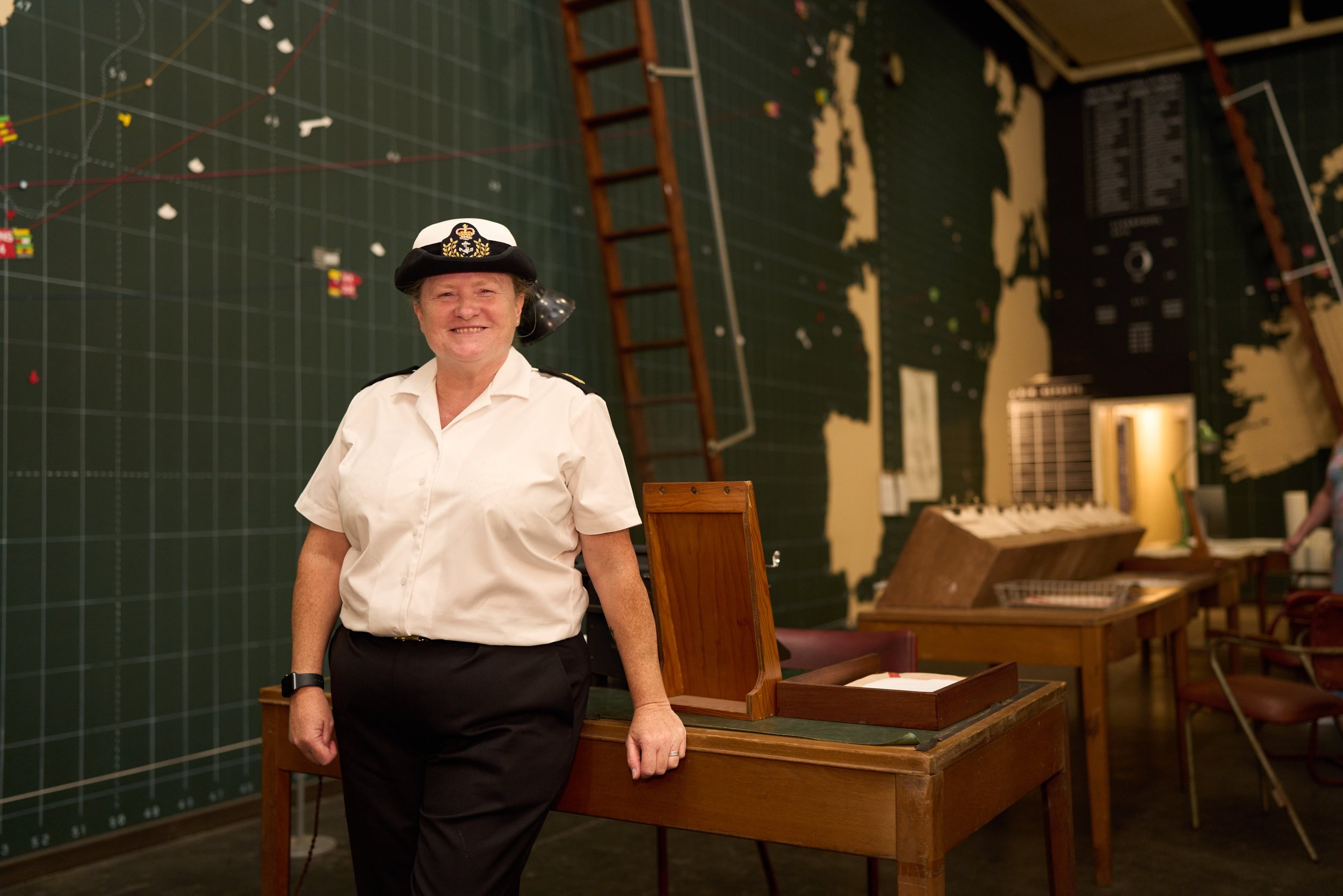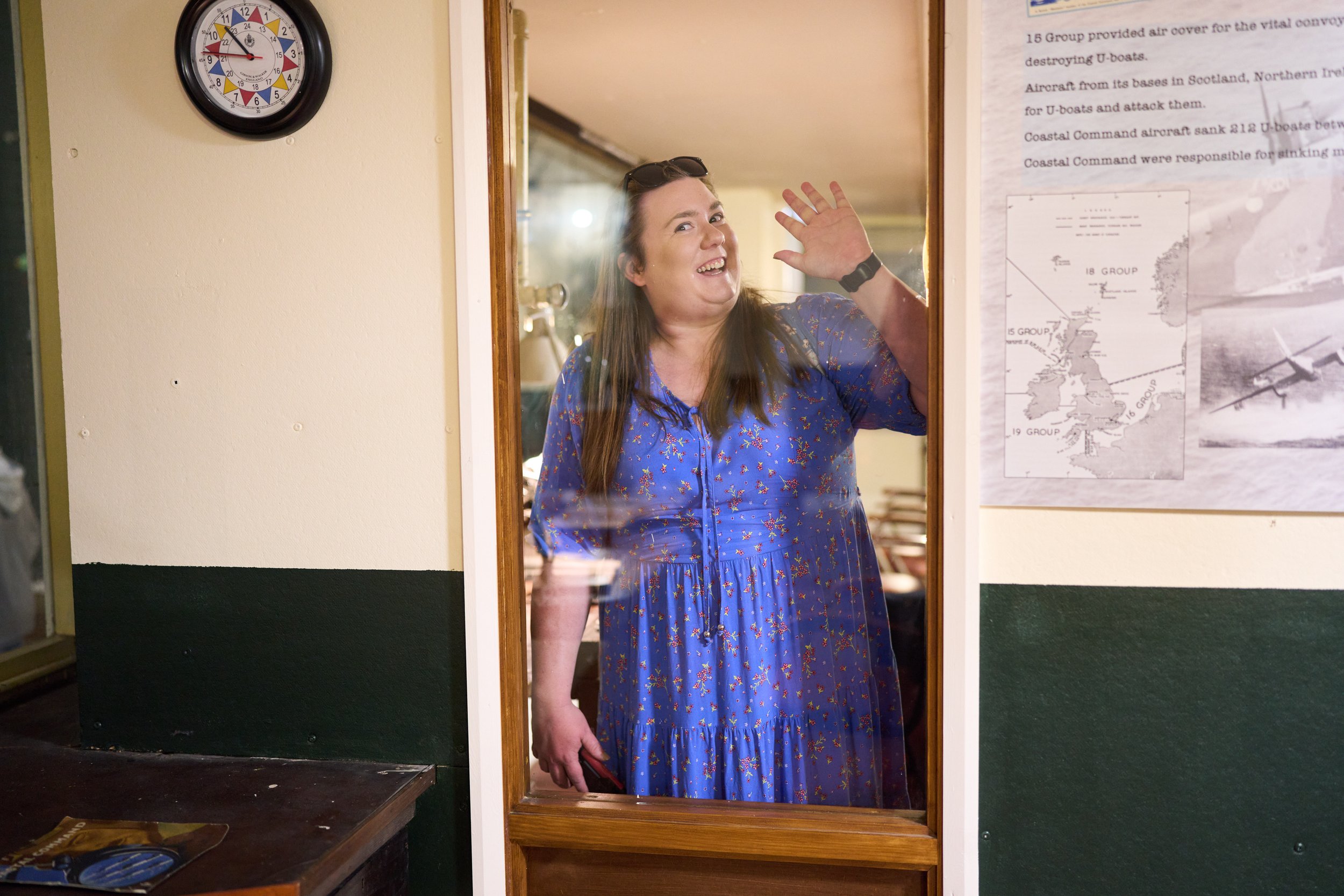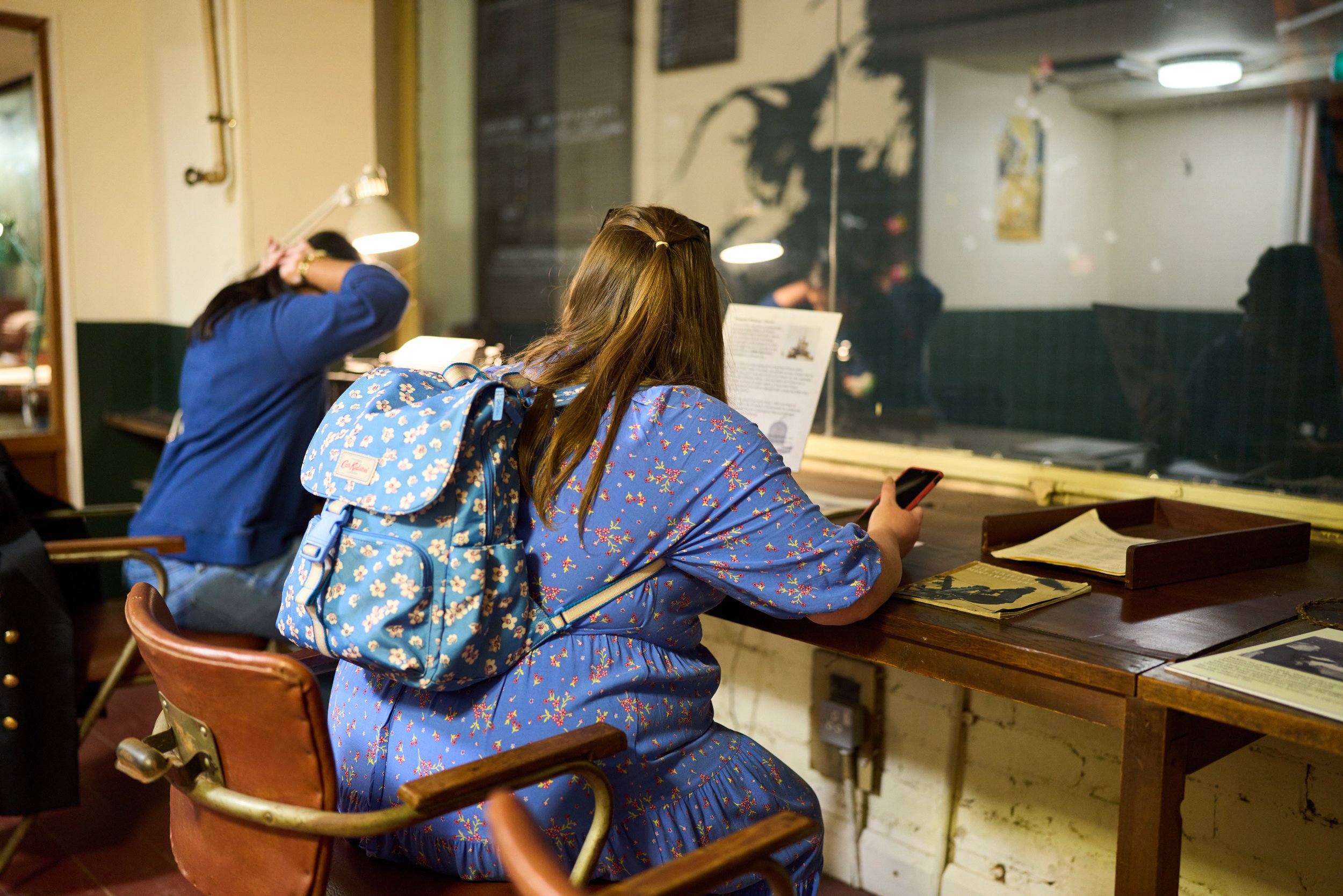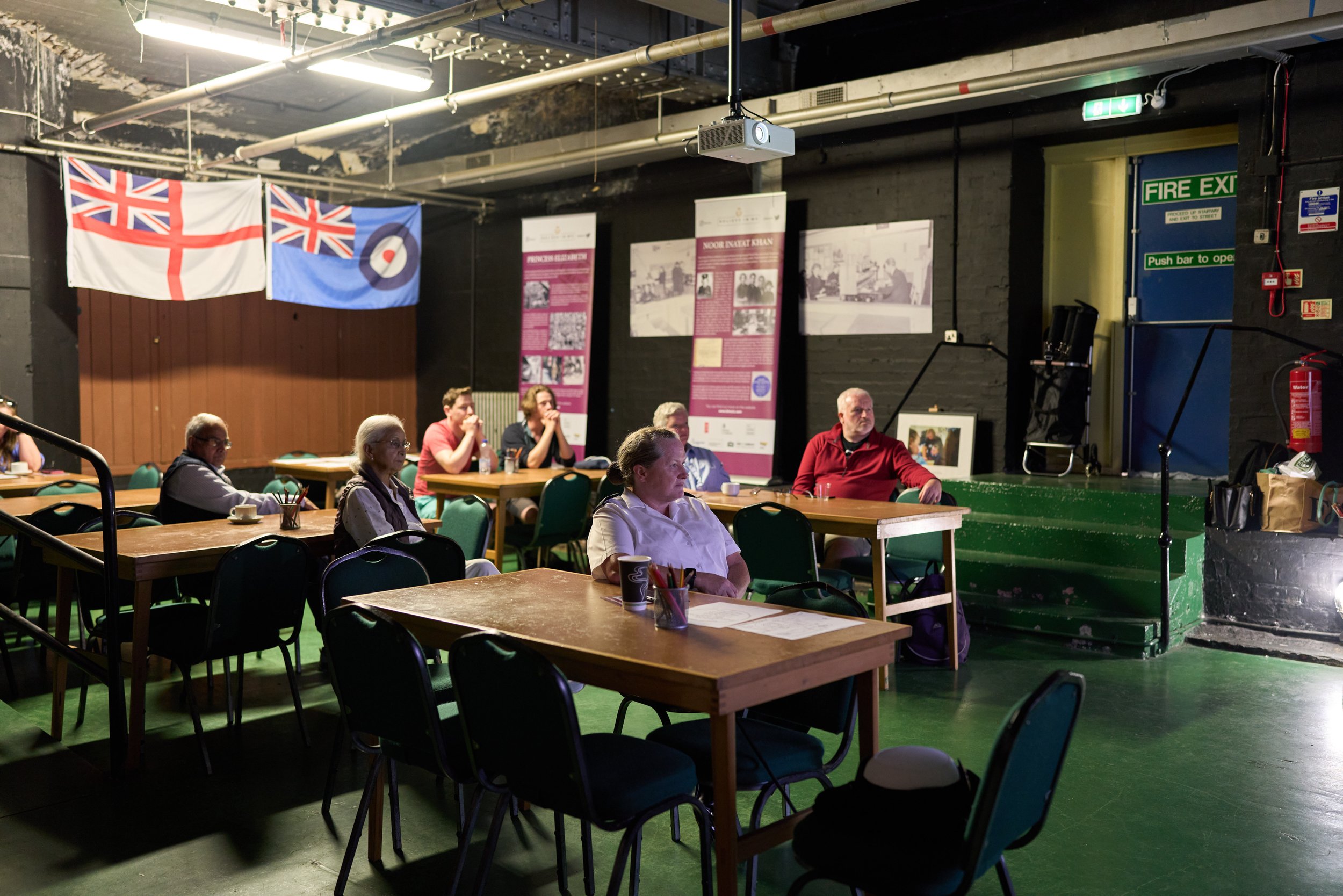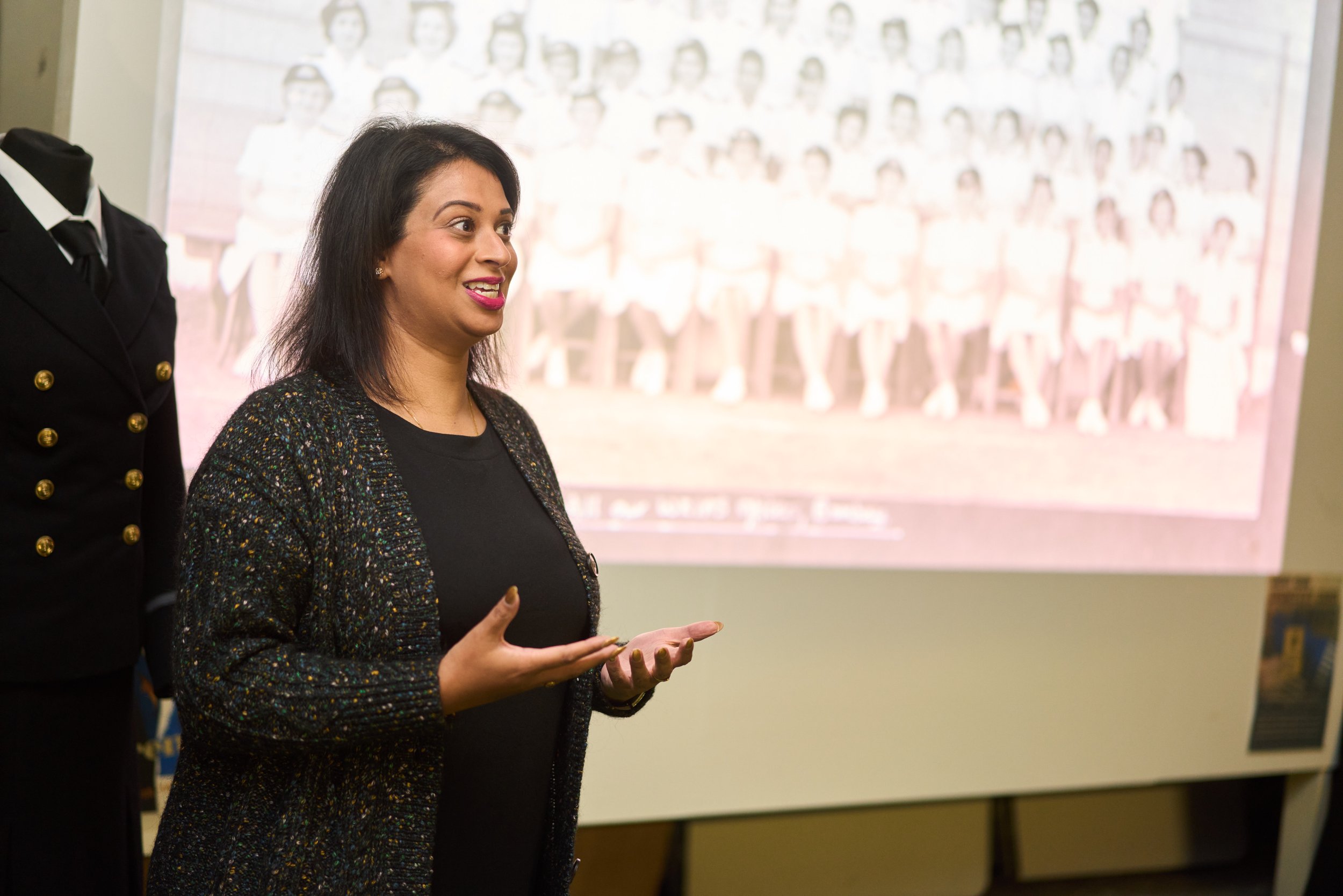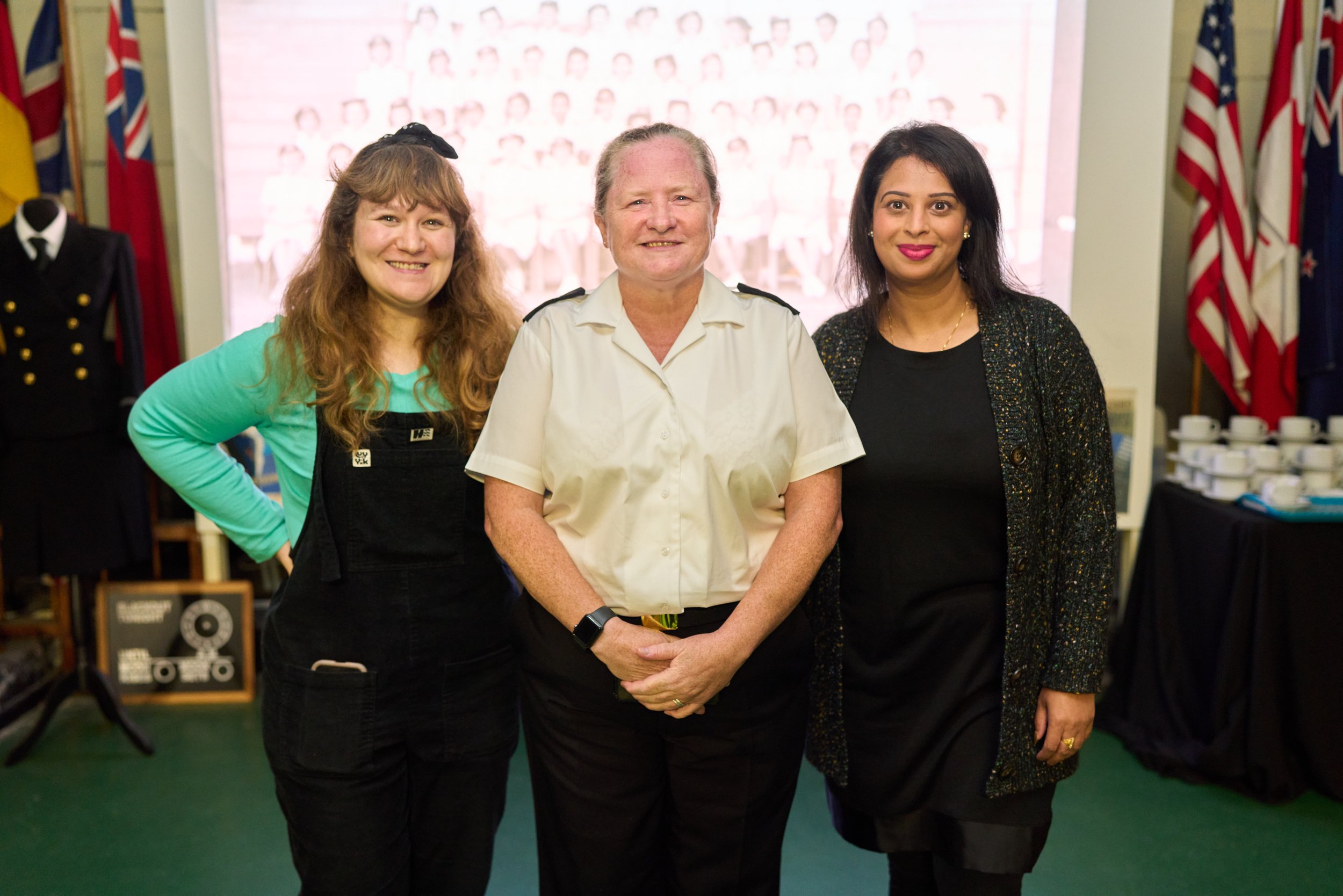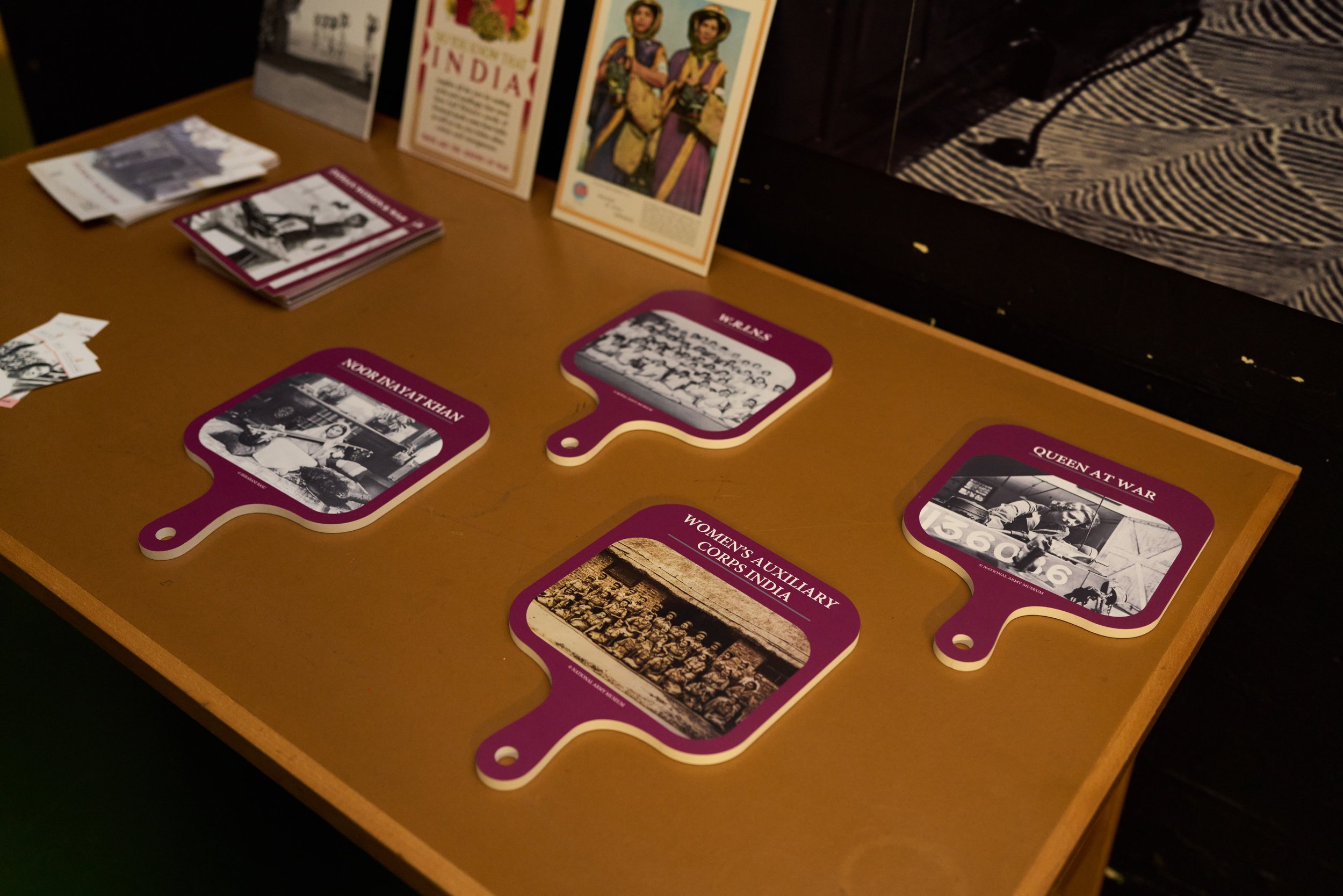Sharing stories of Wrens and WRINS in Liverpool
Kiran Sahota presenting in Liverpool
After the big launches in London, it was great to start undertaking our community events with our supporting partners up North. At the beginning of August, we collaborated with Western Approaches Museum in Liverpool. This was a good collaboration because the museum had stories of women that had worked as Wrens at the actual museum site sending messages and undertaking important roles during the Second World War. I was happy to run a workshop ensuring that the stories of the Women’s Royal Indian Naval Service (WRINS) were shared and create a wider picture of what was happening during the global war.
The Wrens Women’s Royal Naval Service was created to help fill the jobs as men were needed for the war effort. First formed during the First world War, 1917, it was then disbanded as the war had ended. By 1939 the Wrens was reformed as women were desperately needed to help with the war efforts. The Wrens were helping and assisting the Royal Navy and as the war intensified thousands of Wrens were sent to assist in overseas theatres of war.
The morning started with a tour for our group around the museum which is located close to the docks. We saw the set up and how women worked in tight offices as more and more women were needed as the war went on. These women joined the Wrens and wanted to help as they felt it was their duty. I also shared my films on WRINS and presented a talk for these forgotten women. I was joined by Ann Miller-McCaffers (who is in the Royal Navy) whom I worked with while she was at Royal Military Academy Sandhurst to share what we have been exploring. There were some interesting facts and stories shared throughout the day such as: Liverpool was the most bombed city outside of London during the Second World War. Many of the children from Liverpool were evacuated to Wales for their protection as the war went on and Liverpool was no longer safe for them.
“A girl came into our mess and another said, “Oh she’s a lesbian” and I said “well what’s one of those?”
- Former Wren, Maggie Howgate
Nancy Spain was known to be openly gay in the 1940s when she served as a dispatch driver before being commissioned to work in the Wrens press office in London. Her story was partly responsible in forming the image of Wrens as eager and hardworking. At the same time, she was tasked with suppressing any information that was to be kept private. Nancy lived openly with her partner, who was the editor of SHE magazine. Nancy and her partner died in a plane crash in the 1960s. Despite homosexuality being partly decriminalised in 1967, it was not until 2000 that the ban of homosexuality in the armed forces was fully lifted.
“Nancy was an air mechanic in the Wrens, and you just heard the whispers- ‘there’s a couple of girls in the next mess’. They must have had wind of it because they used to do bed checks nightly. Curfew was at 11pm if you wee under 21, and twice a week you could come in at midnight. Apparently, they got caught in the laundry room, because she came down one night to the mess and said ‘I am leaving tomorrow- either they discharge me or I request my discharge, but you’d have to put a reason or I can be discharged on ill health, so I’m going to the naval hospital tomorrow morning in Plymouth”.
- Former Wren, Maggie Howgate
Nancy only got that notice when she came down from work and she was told to pack her bags. That was the last we ever heard from her.
Just like the WRINS there were restrictions on the women that could join the Wrens and this often-meant women that were educated. The WA Tactical Unit was created in January 1942 and tasked to improve the development and dissemination of new tactics to the Royal Navy and Allied vessels. The map reading room was the hub of the museum and just like then Royal Navy today everything had a place in case of an emergency. It is a shame that we don’t know every single story of the women that worked there but the community learnt about both sides of the war.
